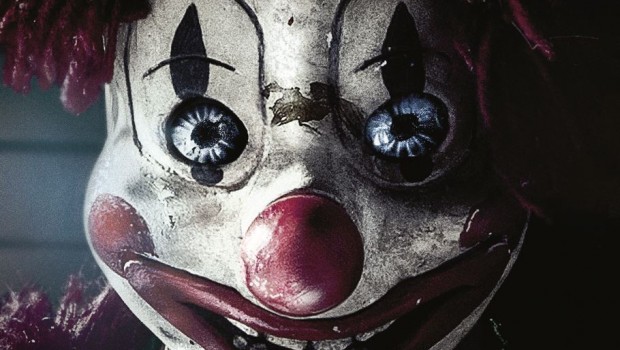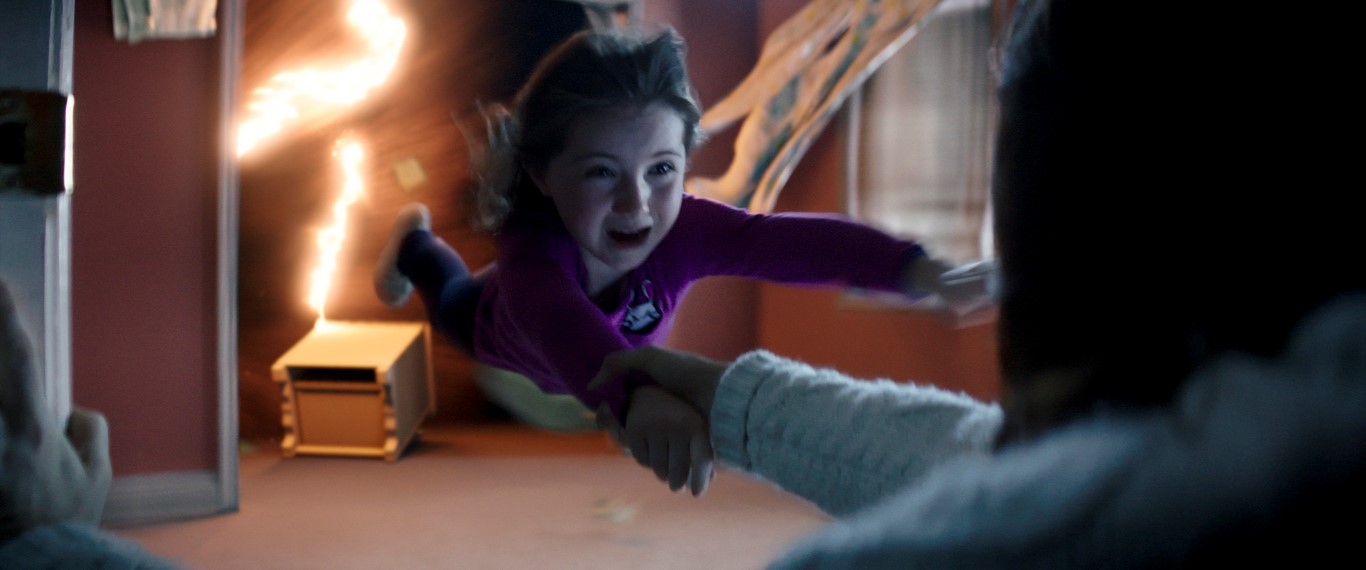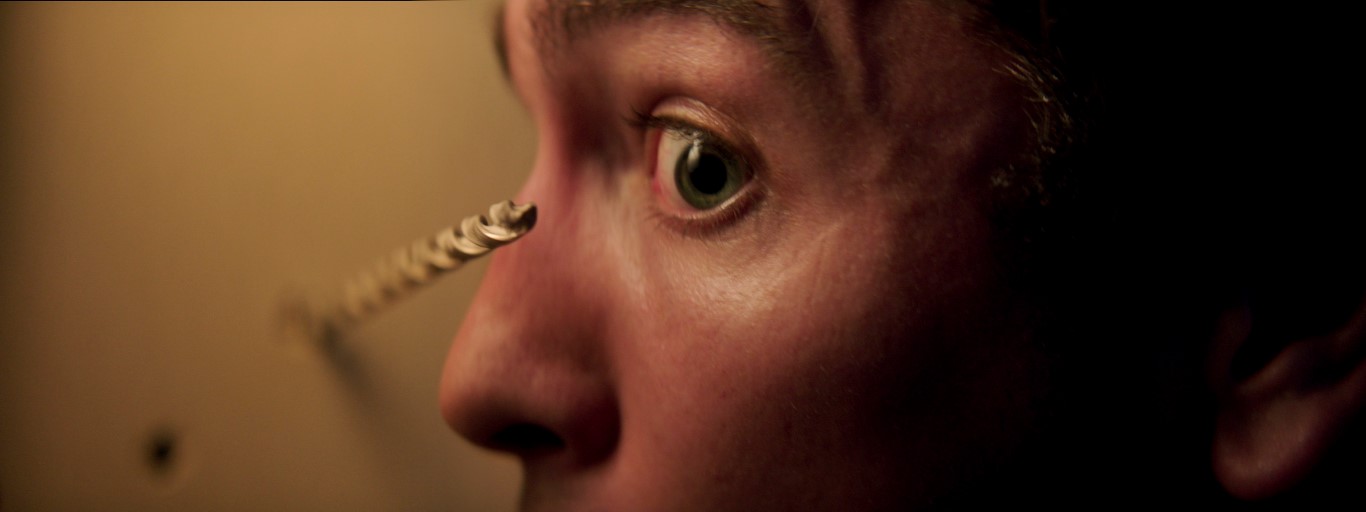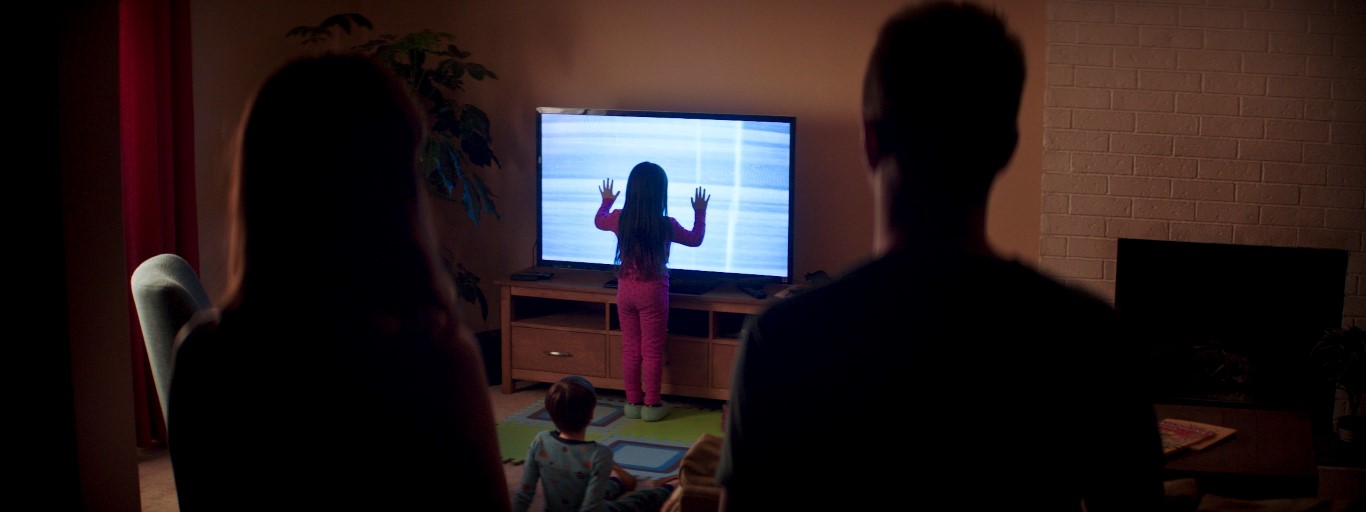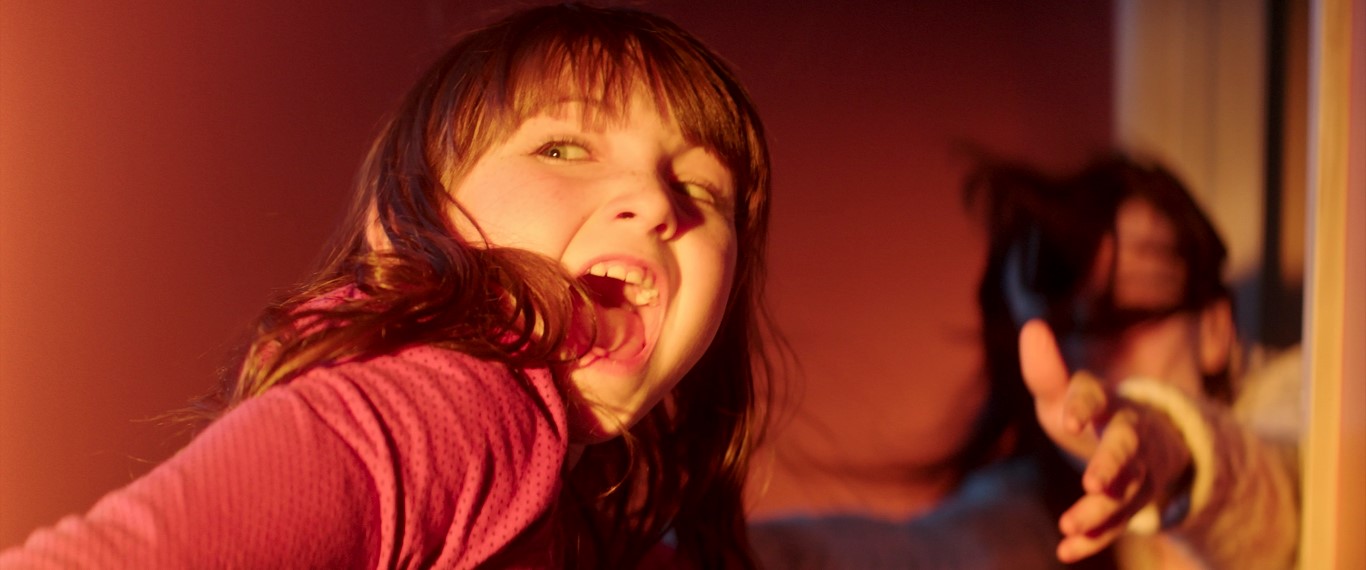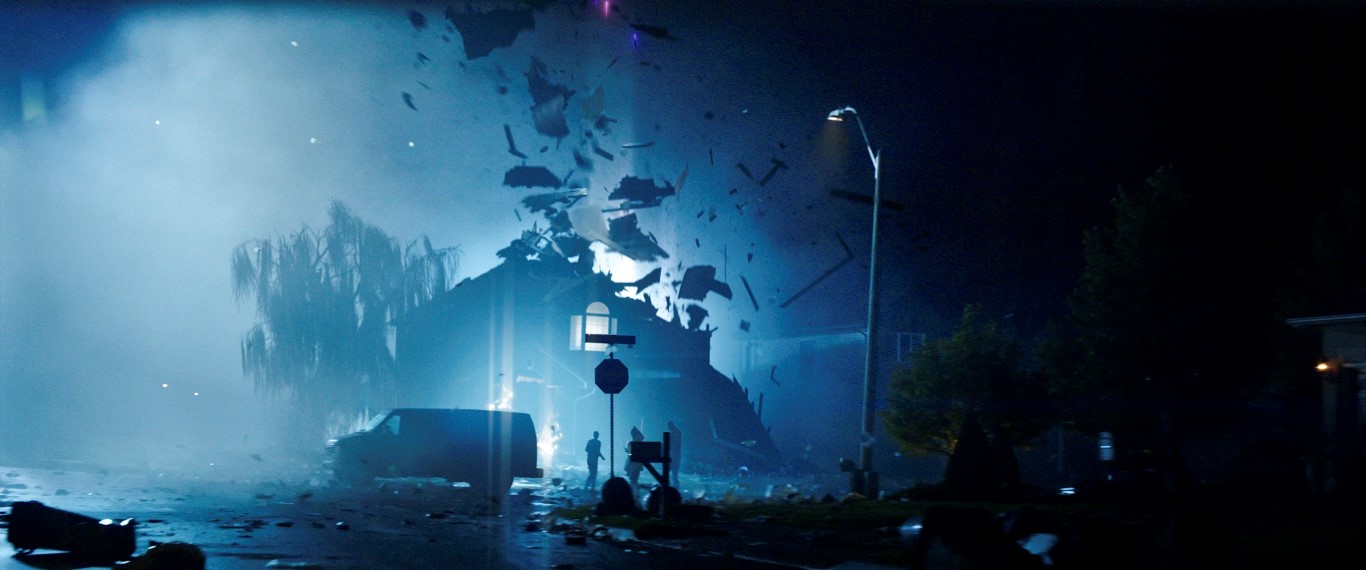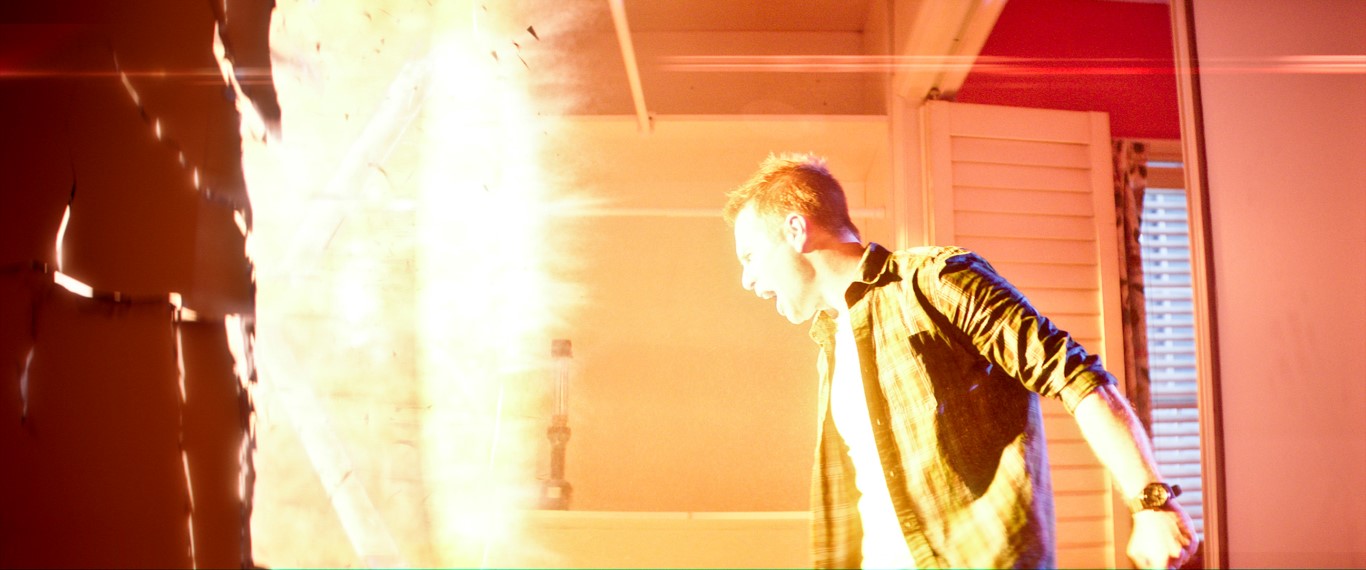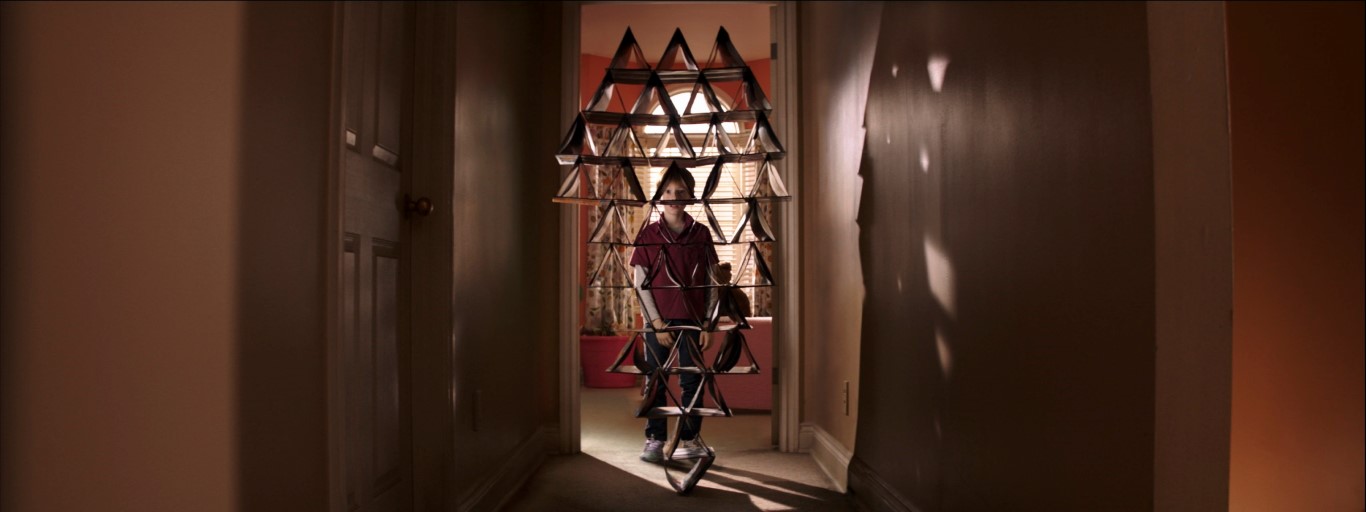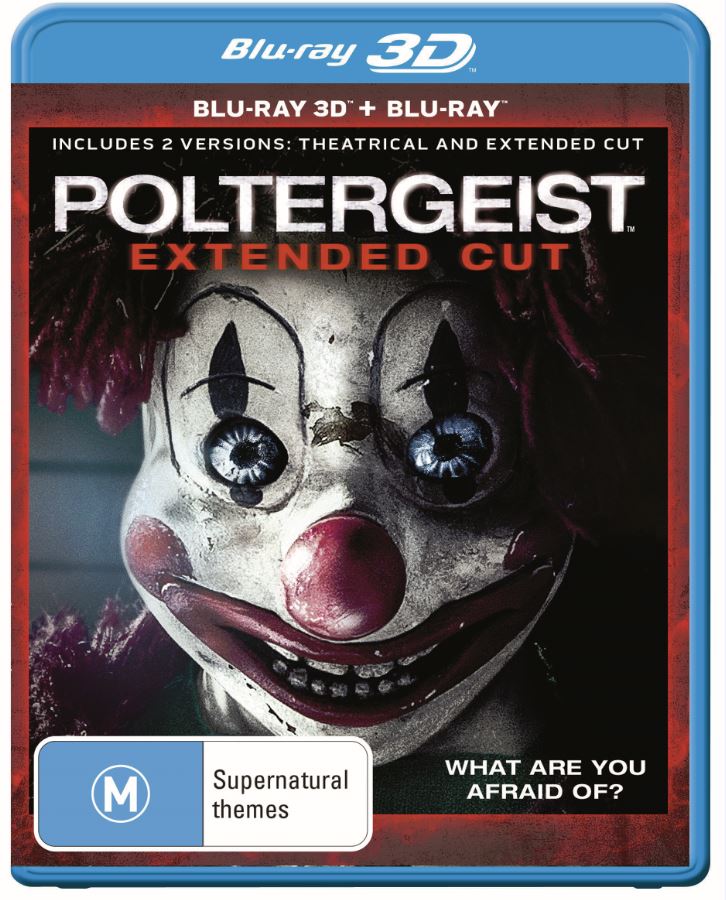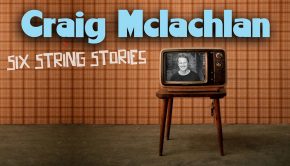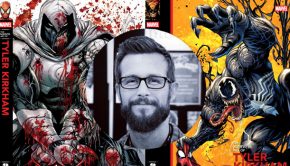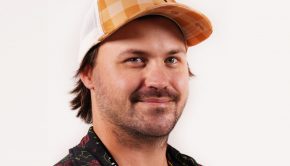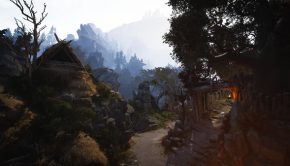Sam Raimi and Gil Kenan Interview on Poltergeist 3D
Writer, producer and director Sam Raimi may be best known for his work on the Tobey Maguire-starring Spider-Man trilogy, but he got his break in 1981 as the director and writer of the cult horror classic, The Evil Dead. So for Raimi, working as producer on the Poltergeist remake is something of a journey home, a much welcome return to his roots. And he couldn’t be more excited about getting to grips with re-working one of his favorite features.
“I remember seeing it for the first time in a movie theater and it was a mind-blowing experience for me,” he says. “I was terrified, and yet at the same time, I so connected with the characters, and it was a very moving story. Together it was a very powerful combination, and even though I’d been a giant fan of great horror films, I’d never experienced characters before that I fell in love with and was so emotionally connected to in a horror film. It made the movie so terrifying.”
Even before Poltergeist, the young Raimi was obsessed with the horror genre; he was shooting Evil Dead’s precursor, Into the Woods, on Super 8 while still at school. The 55-year-old Michigan native would go on to become one of the most successful creatives in the business on both television and movies, his output including Darkman, A Simple Plan, Xena: Warrior Princess, Oz the Great and Powerful and, of course, Spider-Man.
When considering a re-make of the 1982 classic Poltergeist, he looked to Israeli-British-American director Gil Kenan, best known for his work on the sci-fi fantasy film City of Ember, and 3D animated fantasy comedy Monster House. Thirty-nine-year-old Kenan received a degree in animation from the University of California, where for his graduate thesis he made a 10-minute stop-motion/live action film, The Lark. Shortly after its public screening, he was snapped up by the Creative Artists Agency, who showed the movie to Robert Zemeckis and Steven Spielberg. In 2006, the high profile duo would offer the young filmmaker the director’s chair on Monster House, which went on to win an Academy Award for Best Animated Picture.
Now he’s tasked with directing a film originally conceived and written by one his mentor’s, Steven Spielberg, and like Raimi, he has enormously fond memories of the original.
“My initial Poltergeist experience was a VHS one – I didn’t see it in the theater,” he says, “But I remember picking it off the shelf at my local video store. Most of my growing up as a film lover took place between the Cult and Horror sections at the video store in my suburban neighborhood, and I remember the feeling in the schoolyard was that it was a quality film. It had this great and terrifying quality of feeling like it was a perfect mirror of my life at the time, and that of course made it relatable, but it also made it that much more terrifying.”
Starring Sam Rockwell, Rosemarie DeWitt and Jared Harris, Poltergeist is the story of an ordinary family dealing with extraordinary circumstances. Set in America’s nondescript suburbs, our young family-of-five move into a new home only to find it possessed by angry poltergeists. When these angry spirits abduct their youngest daughter, Madison, they recruit a team of scientists and psychics – including the clairvoyant reality star Carrigan Burke (Harris) – to get her back.
Sam, what had you seen of Gil’s work that made you think he’d be the right match for this project?
Sam Raimi: I think what was immediately appealing to me was the work he did on Monster House. It was funny, and yet there was a real connectivity with those characters, and he knew how to work animation, which was going to be a key element. He had a great style, but also I felt the characters had heart. We had to have a director that knew how to make the emotional aspect of the film work.
And Gil, how hands-on was Sam?
Gil Kenan: Sam has been an incredible partner in this project. I learned early on in my career that if you can get to work with a filmmaker/producer, you should leap at it. Monster House was my first movie and it was produced by Robert Zemeckis and Steven Spielberg and I thought I lucked out because of the amount of support for my vision, and also the mutual respect during the project. But Sam took the cake on this experience. He’s been 100 percent supportive of my process and vision for the film – it’s been a perfect experience so far.
Was there any anxiety on your part for tackling such hallowed ground?
GK: Of course, yes. There was, and there still is, but I’ll say that there’s nothing that takes the place of that anxiety more than the excitement of feeling you have the pieces in front of you to tell the story well. Of course, I’m still daunted by the scale and scope and the importance of the original film, but I also know that we made this film with the greatest amount of respect and love and honor to that film, and that the story we were able to put on the screen bears that spirit.
You’re both clearly familiar with the original movie, but did you take a refresher course and re-watch it? And if you did, how do you think it holds up after 33 years?
SR: I did watch it again, and I thought it held up beautifully. It’s almost a timeless picture, like Frankenstein, or Texas Chainsaw Massacre – it never seems to age. That’s one of the reasons I think people have stayed away from it for so long, not wanting to remake such a classic. That’s what stopped us for a while, but then after many attempts at a screenplay we got a version that was worthwhile. We were so lucky to find [screenwriter] David Lindsay-Abaire, who also loved the original. We weren’t trying to top the original – that’s like trying to top Gone with the Wind – but instead pay tribute to it and make our own story based on the original. So yes, it’s a remake, but we’ll make new characters and they’ll have their own new, personal interactions with each other, their own family dynamic. Of course, it’s the story of a young girl who’s stolen by a poltergeist, but everything in the screenplay connects you to the family, and it’s in our time, this time, 2015. It made it very relatable to the modern viewer, just as Poltergeist was so immediately relatable to the audience of 33 years ago.
GK: I watched it once at the very beginning after I’d read our screenplay. I knew the film very well – I don’t think anything surprised me in my viewing of it, except for how high the bar was for the quality and the heart and the emotion of the storytelling. I was already frightened and daunted enough by the task ahead of me – I wanted to be inspired by the spirit and the quality of the original effort, and then it was time to bring my own abilities to the table. For me to authentically and genuinely tell the story without a sense of artifice or pretention, I had to tell it anew. Obviously there were indelible images from the many viewings of the film that stuck, and some of those had to find a way to work their way through to the screen in this new telling. Others took detours and different directions just by virtue of telling the story.
You’re right, there are some really key elements and memorable set pieces in the original movie: which did you feel were the most important to keep?
SR: The emotional strength of the family coming together, and that their love is finally the thing that beats evil. Plus there are classic sequences in Poltergeist that we pay tribute too, that we don’t ignore, and we have a great take on those great classic moments. They’re not just a redo, but a re-interpretation and an original version, and for that we needed a great writer and a great director, and fortunately we got both of them.
How about some of the specifics beats, like the clown, the man tearing his face off in his reflection, the spooky tree, the classic ‘They’re here’ line… Did you study what made the original such a memorable movie?
SR: Well, you’re re-telling the story, so you ask, ‘What did the audience love about the first one? How can we give them that, but in a new way, with an original take on it?’ I think that was the writer’s process first, and once David had made it contemporary and different and had new characters with their own dynamic, I think naturally Gil found the reality and the truth between these new characters. So that was part of the process, but I think it moved past that.
Were there elements from the original you felt could not work in a contemporary setting?
SR: It’s not that I didn’t believe the elements couldn’t work, but there were ways to have the new version of the story reflect the modern situation of family, and the new dynamics that have developed in the last 33 years with family and the economy, the fact that people aren’t doing as well economically as they were in 1982. Whenever you tell a story as a writer of your own time, you speak the language of that time naturally, and I thought that was going to be a great advantage for us. David Lindsay-Abaire is a great listener – he writes in the tongue of the people. The film seems very now.
It’s interesting that the original family was in a suburban community because they were doing well, and your family in 2015 is there because the father has lost his job. Moving to the ‘burbs is a step down for them.
SR: That was the key to unlocking the fundamental difference between then and now. We no longer look to the suburbs as the ideal – it’s no longer the place where you go and aspire to if everything goes well. One of the most resonant things about this take on the story is that I grew up in those suburbs. The house I grew up in looked almost exactly like the house I grew up in in the original film, just smaller and a little dirtier, but I couldn’t wait to get out when I was finished with school.
GK: For me, too, the suburbs became this almost prison I had to escape from once I got to school.
SR: I don’t know anybody in my world that aspires to move to a cookie-cutter neighborhood. We’ve just grown up in a different time, and I thought it was a very clever device on David’s part to begin the telling of the Poltergeist story with a totally reframed concept of the environment. And that environment, of course, is so critical to what ultimately is the cause of the horror in the story, this sort of bad land. I think that really set the course for how the dynamic would shape and modernize.
The original 1980s family would enjoy a little weed in the evening – which seemed kind of edgy and risqué for then – but your family prefer drinking a whisky to unwind. Why that change?
GK: That actually came from Sam Rockwell. It was something he felt more connected to as a character. It felt authentic to him and it felt like the right move to listen to his characterization. You’re absolutely right, because you can’t push the boundaries of the vice that the family shared in secret when the kids are ensconced in their bedrooms. You’d have to go to much harder drugs in 2015 to get a rise from the audience!
You’ve contemporized the story in many ways… there are iPads, GPS systems, drones… was it important to get those elements in to update the story?
SR: We didn’t have some overall mandate to bring in all the modern technology; literally the mandate was to be honest to what a poltergeist story is, and there are two parts to the answer to that question. The first part is that the very haunting itself is made up of the objects around you that you take for granted – chairs, comic books, purses, televisions, trees of course – but the other side is to combat the poltergeist, and to do that you reach for the devices and objects that we all have around us. So it felt like a natural extension of that quest to reach for things like the iPad screen and then, of course, the drone, which figures so prominently in the search for their daughter, Madison, on the other side.
Was the decision to make it 3D also to help make it feel more contemporary?
SR: That was suggested by the studio. They thought that would be an interesting way to bring a new dimension to the film, and another way to update it and make it feel more immersive. Gil has such a great eye for visuals so I supported that idea. I think it’s going to turn out to be fantastic ride for everybody.
GK: I had had such a great experience in creating a 3D thrill ride in Monster House, and Sam was just finishing up his great 3D work on Oz: The Great and Powerful, and we both thought the format had the potential to create a big screen thrill ride experience for audiences. The horror genre had not really had the opportunity to take advantage of the extra dimension on screen in many decades, mostly because the conventions were that a big budget blockbuster is the only thing that gets the nod to take advantage of 3D. The truth is, if you embrace the full scope of what 3D can do on screen, you realize it’s as effective a suspense tool as music or sound design or lighting or camera work. It becomes an extra weapon in our arsenal.
You mentioned Sam Rockwell: What was the process behind the casting?
GK: The conversation I had with Sam Raimi was about finding the very best actors we could to bring this family to life. What we loved about Sam Rockwell was he brought a really idiosyncratic spark to every scene. He still dealt with the emotions and the weight of the drama of losing his daughter, and the fight to get her back, but there were many twists and turns emotionally on the way to getting there that only somebody as gifted as Sam could tap into, to make those moments feel unexpected. He and Rosemarie DeWitt were both at the very top of the list as we started this process, and it was a miracle that we were able to get them both. Once we did, the burden was on finding their children and making sure we created a dynamic that was alive and authentic, that allowed an audience to really buy into their drama. That was essential – if you get that right it means the second half of our story, the quest to win this little girl back, becomes as gripping and as suspenseful as it has to be.
In real life, terrible tragedies befell the actors that played the kids in the original movie. When casting the children for this, was there any talk of ‘The curse of Poltergeist’?
SR: I kept waiting for it but it actually never came up. Obviously we’re all aware of those stories swirling around – I think I was more aware of it for myself, and I’m still looking behind me. These kids have grown up in a post-Poltergeist world, and it was really a great fortune that we were able to find Saxon, Kennedi and Kyle, who could bring a big dose of humanity in their own personalities to the family. So much of what the film is now is due to us finding them.
You added a new character too, to replace the psychic Tangina – played so memorably by Zelda Rubinstein in the original. In your version the psychic is now a reality star, played by Jared Harris.
GK: Well, you can’t top Tangina, or Zelda Rubenstein! She created a real, indelible mark on pop culture. So much of her character was hard-wired into her persona on and off screen, so David wisely re-drew the very concept of the clairvoyant who arrives at the eleventh hour to help the family when more traditional, academic means fail. He wrote another character entirely, one who has a very modern job of a reality television host, and that created its own interesting, internal drama. The character is an authentic clairvoyant who had genuine gifts that had defined his life; both for good and bad, and he had to really dumb down his craft to keep his TV audience entertained. So it became a really interesting character to bring to life: Jared stepped up to the challenge and created a character that will leave its own indelible mark as audiences watch our film.
SR: I thought that was one of the great things that Gil and David updated in this version of the Poltergeist film. Somebody with that true gift and those true powers maybe 33 years ago would have been used just for police work or the odd contacting of a deceased relative; nowadays they would most probably have their own television reality show. It was really a funny, yet truthful, point of view on what they might be doing today.
Did you approach any of the original cast for cameos?
GK: The first conversation that Sam Rockwell had after he and I read through the screenplay together was to reach out to Craig T. Nelson and JoBeth Williams. They gave him their own recollections of their experience in making the film, and also their blessing in our pursuit of the retelling of that story. That happened very early on.
How about Steven Spielberg, who wrote the original – did you consult with him too?
GK: I wrote two letters when I started my work on the film. I had taken the responsibility of entering into this world that had been conjured up 33 years ago by two other filmmakers, and wrote them both a mission statement of what we were hoping to do. I told them of the respect and honor we felt for the work they created, and we promised we would show them the film as soon as it was ready and before it’s out. I’ve had the good fortune of meeting with [original director] Tobe Hooper in the time since, and I’m looking forward very much to showing them both the film.
Sam, you kicked off your career with Evil Dead in 1981: how do you think things have changed in the horror genre since then?
SK: I think the audience has become really educated since I started working and making horror films. Any fan of the genre has seen every meaningful horror film ever made repeatedly, so you really have to be original now as a filmmaker to make an impact, whether it’s an old story done a new way, or a brand new story that they’ve never seen before. It’s got to be a new take on it. That’s what’s so great about Gil – he has a very original vision.
The original went on to spawn three sequels: Do you see the same for this?
GK: This seems to me like a standalone picture, so I don’t see it that way. It has a really great beginning, middle and very definitive ending. As it is, it just feels very complete.
Interview by Tony Horkins
OWN POLTERGEIST ON BLU-RAY AND DVD OCTOBER 21


